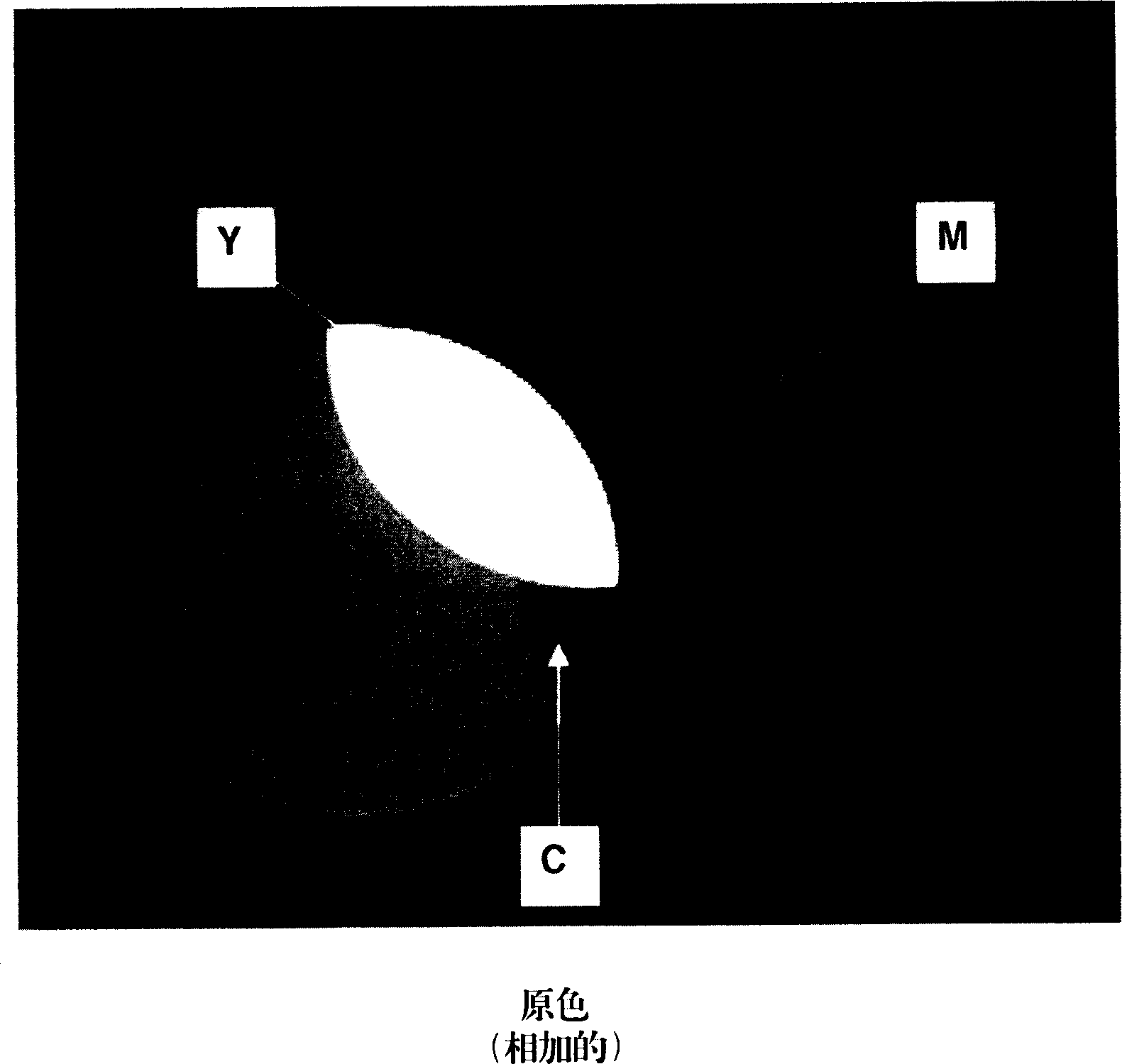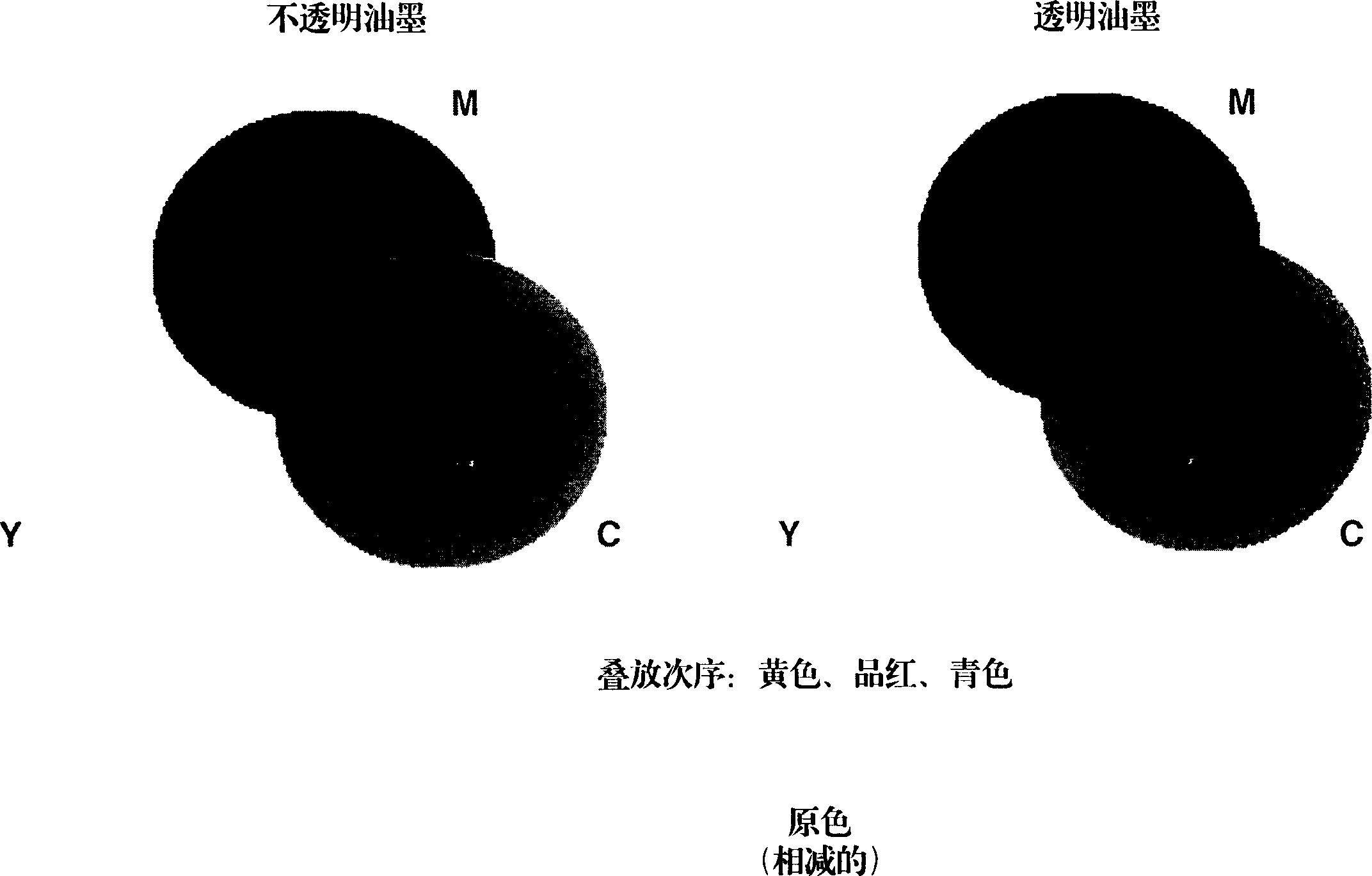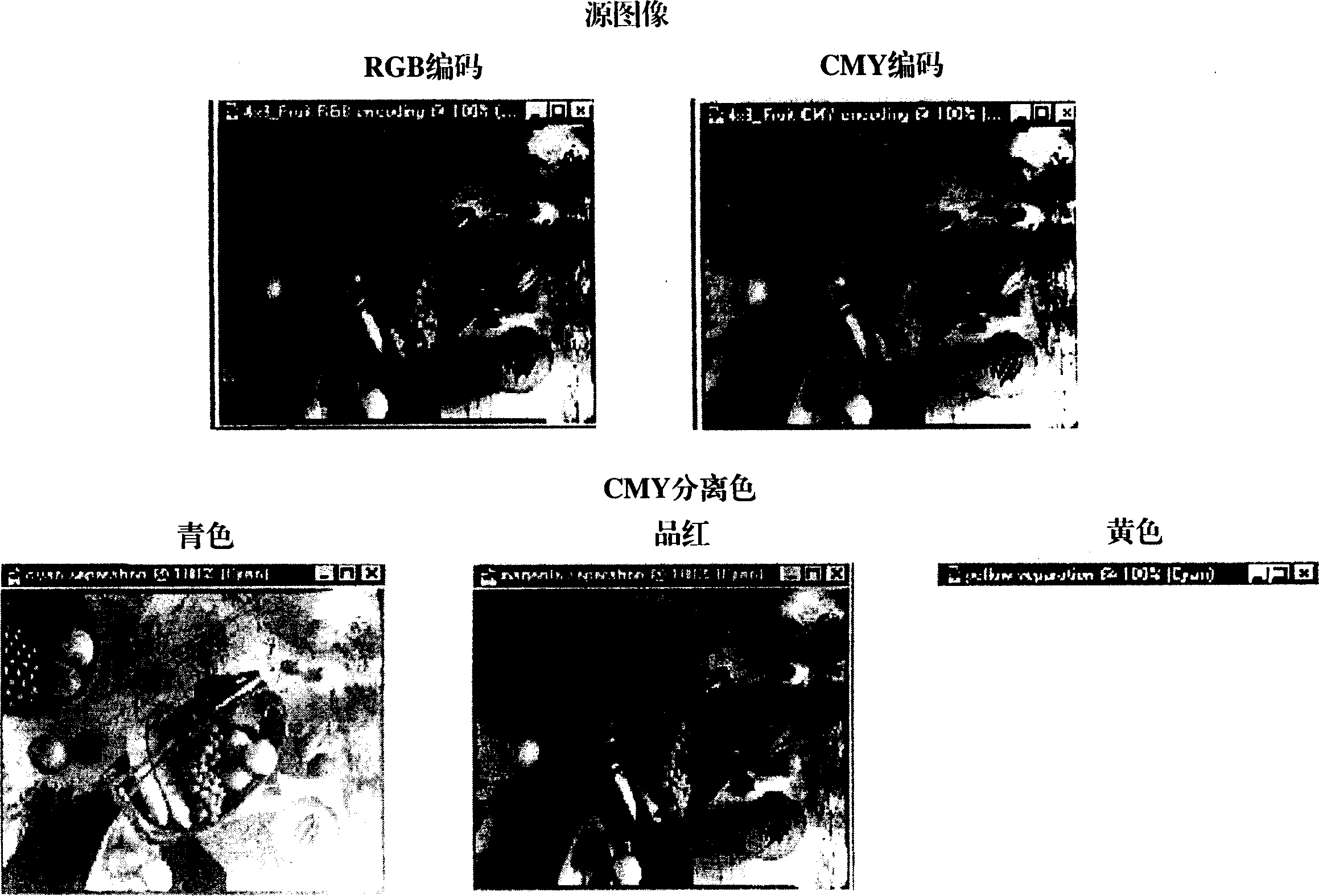Color copying method
A technology of color and tone, applied in the direction of color separation/tone correction, photographic plate-making process of pattern surface, instruments, etc., can solve problems such as missing user judgment
- Summary
- Abstract
- Description
- Claims
- Application Information
AI Technical Summary
Problems solved by technology
Method used
Image
Examples
Embodiment Construction
[0029] Detailed Description of Preferred Embodiments
[0030] In the following description, terms such as "record", "separate" and "channel" are used somewhat interchangeably. When halftone printing plates originated from the use of photographic contact negatives, the term "image record" was introduced in color process printing. The production of radiant colors by devices or objects that emit or generate their own light (sun, television, etc.) involves additive color systems. Red, green, and blue are well-known additive primary colors ( figure 1 ). An incredible number of colors can be produced and differentiated by mixing these primary colors in varying amounts. Landscapes and images were recorded through separate photography through red, green, and blue filters. These provide a negative grayscale record of the spectral components. For example, a red record (negative) defines the amount and position of cyan ink (red's complementary color). Similarly, the red-recorded po...
PUM
 Login to View More
Login to View More Abstract
Description
Claims
Application Information
 Login to View More
Login to View More - R&D
- Intellectual Property
- Life Sciences
- Materials
- Tech Scout
- Unparalleled Data Quality
- Higher Quality Content
- 60% Fewer Hallucinations
Browse by: Latest US Patents, China's latest patents, Technical Efficacy Thesaurus, Application Domain, Technology Topic, Popular Technical Reports.
© 2025 PatSnap. All rights reserved.Legal|Privacy policy|Modern Slavery Act Transparency Statement|Sitemap|About US| Contact US: help@patsnap.com



